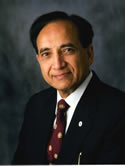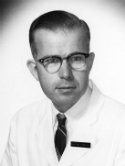Critical care for the severely ill head and neck patient Journal Article
| Authors: | Downey, R. J.; Friedlander, P.; Groeger, J.; Kraus, D.; Schantz, S.; Spiro, R.; Strong, E.; Shaha, A.; Shah, J. |
| Article Title: | Critical care for the severely ill head and neck patient |
| Abstract: | Objective: To delineate the frequency and causes of admission to a critical care environment for patients undergoing head and neck surgery at Memorial Sloan-Kettering Cancer Center. Design: Retrospective clinical investigation. Setting: Adult intensive care unit of a tertiary referral cancer center. Patients: All head and neck surgery patients admitted to the special care unit (SCU) of Memorial Sloan-Kettering Cancer Center between January 1, 1994 and December 31, 1995 were included in this study. Interventions: None. Measurements and Main Results: The data collected included demographic, operative procedures, clinical, laboratory, and physiologic variables at time of SCU admission, at 24 hrs, as well as vital status at the time of discharge from the SCU and hospital. Other data collected were the need for mechanical ventilation and inotropic agents. During the period of January 1, 1994 through December 31, 1995, 37 (1.5%) of 2,346 patients undergoing head and neck surgical procedures required admission to the SCU. During the same period, six patients receiving medical treatment only for head and neck malignant disease were transferred to the SCU. These 43 admissions served as the basis for the study. The causes of admission to the SCU were pulmonary (15/43), cardiac (14/43), wound related (8/43), and other (15/43). The median length of stay in the SCU was 2 days, and the median hospitalization for patients requiring critical care services was 22 days. Seventy-four percent of patients requiring critical care services were eventually discharged to home. Conclusions: Current preoperative evaluation, operative and anesthetic techniques, and perioperative care result in a low frequency of utilization of critical care services by patients undergoing head and neck surgery. There is no single identifiable cause of complications for patients after head and neck surgery leading to utilization of critical care services. |
| Keywords: | adolescent; child; clinical article; aged; surgical technique; head and neck surgery; kidney failure; pneumonia; intensive care; postoperative complication; health care utilization; intensive care unit; hospitalization; heart failure; complications; renal failure; head and neck carcinoma; multiple organ failure; artificial ventilation; critical illness; acute respiratory failure; mechanical ventilation; lung insufficiency; organ failure; human; male; female; priority journal; article; cardiac failure; surgery, head and neck |
| Journal Title: | Critical Care Medicine |
| Volume: | 27 |
| Issue: | 1 |
| ISSN: | 0090-3493 |
| Publisher: | Lippincott Williams & Wilkins |
| Date Published: | 1999-01-01 |
| Start Page: | 95 |
| End Page: | 97 |
| Language: | English |
| DOI: | 10.1097/00003246-199901000-00033 |
| PUBMED: | 9934900 |
| PROVIDER: | scopus |
| DOI/URL: | |
| Notes: | Article -- Export Date: 16 August 2016 -- Source: Scopus |
Altmetric
Citation Impact
BMJ Impact Analytics
Related MSK Work









